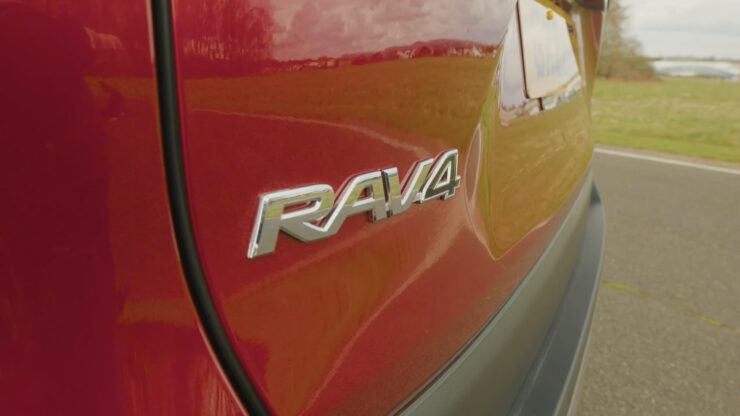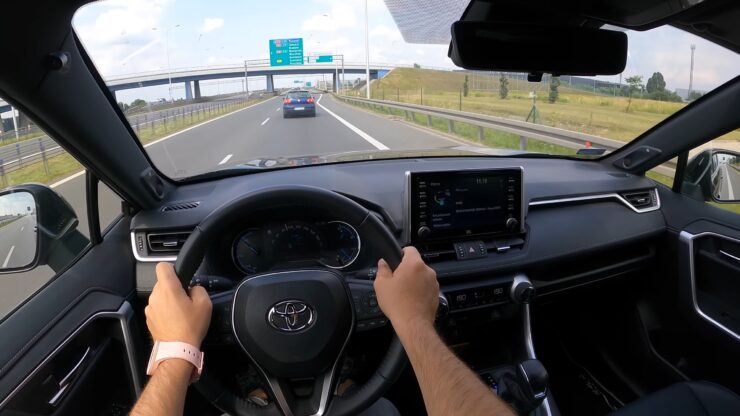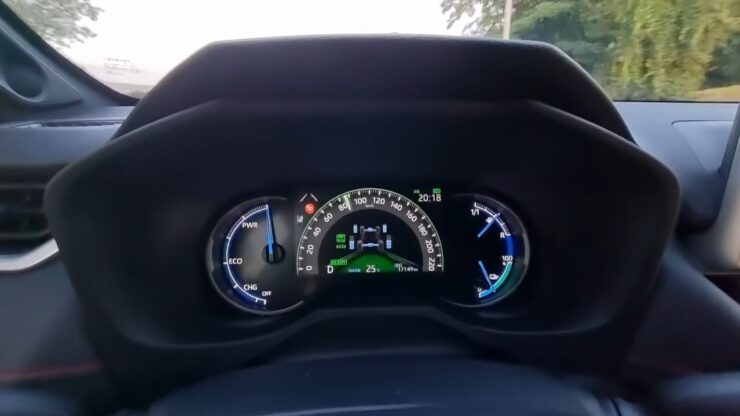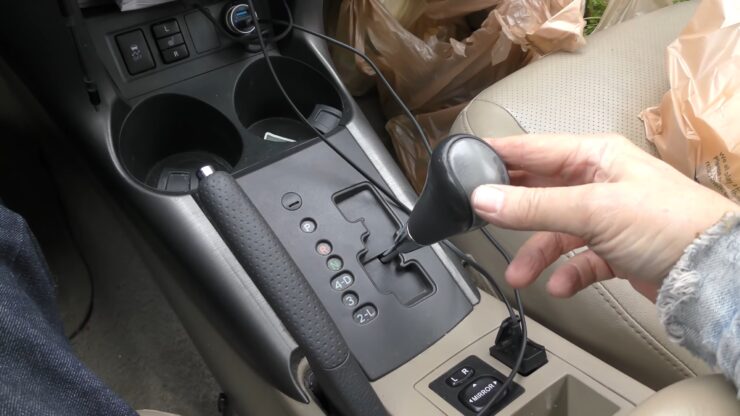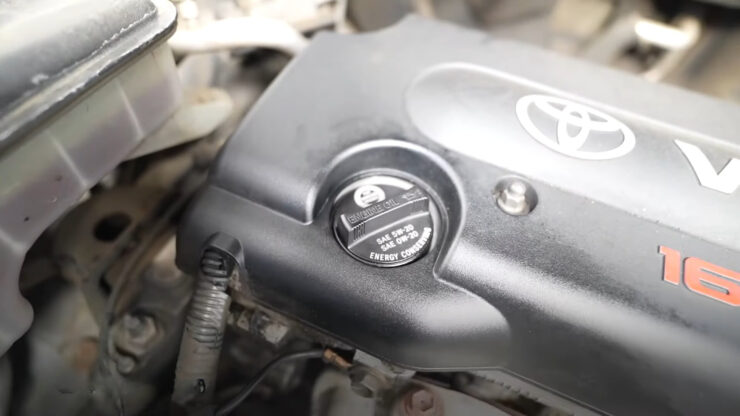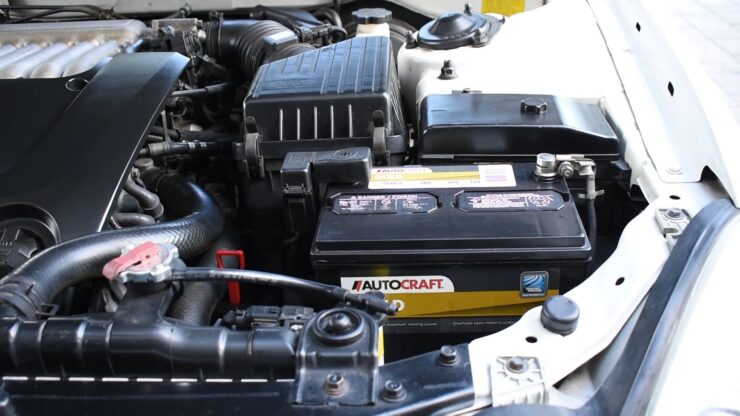The Toyota RAV4 stands out as the leading compact SUV in the sales arena, and it proudly holds the title of Toyota’s top-selling vehicle. This prominence is not without reason; the RAV4 boasts a harmonious blend of attributes that cater to a wide range of drivers.
It promises a smooth and comfortable journey, ample space for both passengers and their belongings, and a commendable ground clearance that effortlessly tackles uneven terrains.
While the RAV4 is often celebrated for its unparalleled reliability, it’s essential to note that, like any vehicle, it has faced its set of challenges over time.
In the ensuing article, we will delve deeper into some of the most frequently reported issues that RAV4 owners have encountered, shedding light on both its strengths and areas of improvement.
A Bumpy Ride with My RAV4
I remember the excitement of driving my 2019 Toyota RAV4 off the dealership lot. It was sleek, modern, and promised reliability. However, within a few months, I began to notice the jerky acceleration, especially at low speeds. It felt as though the car was hesitating before lunging forward, often catching me off guard.
Concerned, I reached out to fellow RAV4 owners and discovered I wasn’t alone. Many suggested switching from ‘Eco’ to ‘Sport’ mode, which did offer some relief.
However, the real solution came when I visited my dealership, and they updated the ECU software. Since then, my RAV4 has been running smoothly, reaffirming my trust in Toyota’s commitment to addressing issues and ensuring customer satisfaction.
6 Toyota RAV4 Issues And How To Resolve Them
1. Jerky Acceleration
The Toyota RAV4, a renowned compact SUV, has been a favorite among many for its reliability and performance. However, like all vehicles, it has had its share of challenges. One of the most frequently reported issues, especially in the recent 2019, 2020, and 2021 models, is jerky acceleration.
Based on information from Car Problem Zoo, which aggregates complaints from the NTSA website, transmission glitches top the list of concerns for RAV4 owners. While it’s a given that transmissions will eventually wear out and manifest issues, certain RAV4 models seem to experience these problems prematurely, possibly due to design or manufacturing oversights.
Many owners of the 2019 to 2021 RAV4 models have voiced concerns about abrupt acceleration or a sudden lurch when trying to accelerate from a slower pace. This sudden movement can be quite disconcerting, often catching passengers off guard with its force.
Here’s a glimpse into the experiences of some RAV4 owners:
- “While transitioning from a rolling stop, as the transmission downshifts to the first gear and I accelerate, the car lunges forward abruptly. This jolt is strong enough to push a passenger backward. I’ve observed this primarily at low speeds in traffic, and it doesn’t occur after a full stop.”
- “My vehicle jerks when I accelerate after a rolling stop. It feels like there’s a throttle issue, causing a delay, making the car jerk into the desired speed. Despite taking my car to the dealership multiple times, they insist there’s no problem.”
- “My RAV4 hesitates and jerks when slowing down and then accelerating.”
Interestingly, despite the numerous complaints, these jerky movements haven’t led to any transmission breakdowns.
Solutions
The non-hybrid fifth-generation RAV4 was the pioneer in using Toyota’s 8-speed Direct Shift Automatic Transmission. Other Toyota models equipped with this gearbox have reported similar issues. This transmission, designed for enhanced response and fuel efficiency, incorporates some manual transmission features, which might be the culprit behind the acceleration ‘jerkiness’ from a slow roll.
The jerky sensation is more pronounced in ‘Eco’ mode and diminishes when switched to ‘Sport’ mode. The ‘Eco’ mode tends to keep the transmission in higher gears longer, even with aggressive acceleration. This delay in downshifting might be causing the abrupt acceleration. By the time the transmission selects the appropriate gear, the engine’s RPMs have surged, leading to the vehicle’s sudden jolt.
Fortunately, many owners found a solution by requesting their dealers to update the ECU software. Toyota, after a thorough investigation, recommended this fix in a Technical Service Bulletin (TSB). The newer RAV4 models come equipped with the updated ECU software, ensuring they don’t face the same acceleration issues as their predecessors.
2. Transmission-Induced Vibrations
The 2013 RAV4 model has been particularly notorious for experiencing vibrations or shuddering emanating from the transmission, especially when cruising at speeds between 20 to 50 mph. While the 2014 and 2015 models have also been affected, the issue is predominantly observed in the 2013 variant.
When this problem arises, drivers often describe the sensation as if the entire vehicle is shaking, akin to traversing a particularly bumpy road.
Here are some firsthand accounts from RAV4 owners who faced this issue:
- “Around the 50,000-mile mark, my car began vibrating between speeds of 40 to 50 mph. I highlighted this issue during routine oil changes, but the mechanics couldn’t identify any problems. The vibrations later intensified, affecting the car even at 30 mph.”
- “I purchased a pre-owned 2013 RAV4 and was introduced to the Torque Converter Shudder within a week. Initially, I dismissed it as a rough road, but with relatively new tires and a mileage of just 51k, I realized it was a deeper issue. The shudder is unpredictable, occurring at varying speeds and conditions. To add to the woes, my extended warranty had expired 10 months prior.”
- “My 2013 Toyota RAV4 shudders around the 40 mph mark. This happens during acceleration, especially when cruising between 35-40 mph. The shuddering ceases once I hit speeds above 45-50 mph. I suspect a faulty Torque Converter.”
Interestingly, the sixth-generation Camry, which utilized the same 6-speed transmission, also reported similar issues.
Solutions
In response to the growing number of complaints, Toyota, in 2017, rolled out an extended warranty program specifically targeting the 2013 to 2015 RAV4 models plagued by the transmission shudder.
Upon investigation, it was discerned that the root cause of these vibrations was the torque converter’s flex lock-up system. The recommended solution involved replacing the torque converter and updating the ECU software.
Toyota’s extended warranty covered free repairs for vehicles exhibiting excessive shuddering. The warranty’s duration was extended to 8 years or 150,000 miles, depending on which milestone was reached first.
For those RAV4 owners whose vehicles had already surpassed the warranty period, a transmission fluid change was suggested. Many owners confirmed that this procedure effectively eliminated the bothersome vibrations.
3. Transmission Glitches in Early Second-Generation RAV4s
The second-generation RAV4 models, specifically those from 2001 to 2003, faced a slew of transmission-related challenges after just a few years on the road. The range of issues varied among owners, but some common manifestations included:
- Slipping or lagging acceleration
- Inability to engage reverse or certain gears
- Rough gear engagement or tremors during gear shifts
The primary culprit behind these transmission woes was identified as a malfunctioning ECU. The Engine Control Unit (ECU) is a pivotal electronic component responsible for overseeing and regulating the operations of a vehicle’s engine. As these RAV4s aged, the solder joints within the ECU weakened, damaging several electronic components and leading to erratic transmission behaviors.
Fortunately, Toyota addressed this flaw in the RAV4 models produced from 2004 onwards, introducing an enhanced ECU design that significantly curtailed the frequency of such failures. However, driving a RAV4 with unresolved ECU and transmission issues can exert undue stress on the gearbox, potentially damaging other transmission components over time.
Solutions
For those who own a 2001 to 2003 RAV4 and begin to notice transmission irregularities, the following steps are advised:
- ECU Examination: It’s prudent to have the ECU inspected by a specialist capable of repairing the circuit board and updating its software. Alternatively, consulting with a dealership is also a viable option.
- ECU Replacement: Swapping the faulty ECU with a used one might seem like a quick fix, but it’s essential to remember that the replacement ECU, especially if it’s from the same generation, might also be on the brink of failure due to deteriorating solder connections. This means there’s a risk of the ECU malfunctioning again within a short span.
- Early Intervention: Addressing the ECU issue promptly can often restore the transmission’s functionality. If the problem persists, a transmission fluid change might help alleviate the symptoms.
- Inspect for Internal Damage: When changing the transmission fluid, if you observe an excessive amount of metal shavings in the drain plug and pan, it’s an ominous sign. This could indicate more extensive internal damage to the transmission, necessitating a thorough examination by a transmission expert.
4. Concerns Over Oil Consumption
Car Complaints, a platform that aggregates feedback from vehicle owners, highlights that the most recurrent issue with the RAV4 pertains to excessive oil consumption, specifically in the 2.4-liter 2AZ-FE engine.
This problem predominantly plagued the 2006 to 2008 models of the third-generation RAV4. The root cause was traced back to the design of the piston and piston rings. The oil return holes situated behind these piston rings were prone to clogging due to carbon accumulation. This blockage would trap oil in the combustion chamber, leading to its combustion.
It’s noteworthy that this wasn’t an isolated issue with the RAV4 alone. Other Toyota models equipped with the same 2AZ-FE engine, like the Camry, reported similar oil consumption challenges. Interestingly, the second-generation RAV4s, despite housing the same engine, remained unaffected. This can be attributed to the use of distinct internal components in their engines.
Toyota addressed this concern in subsequent models. Starting from 2009, the 2.4-liter engine was swapped out for a 2.5-liter variant, which remained free from oil consumption issues.
Solutions
- Engine Overhaul: The definitive solution to this oil consumption dilemma involves replacing the pistons and piston rings with Toyota’s revised components. However, this is a labor-intensive task, necessitating the complete dismantling of the engine. For vehicles no longer under warranty, this might not be a cost-effective solution.
- Regular Monitoring: Many owners opt for a more pragmatic approach, regularly checking and replenishing the oil to ensure the engine remains lubricated.
- Frequent Oil Changes: Undertaking oil changes at shorter intervals, say every 5,000 miles, can potentially decelerate the engine’s wear and tear.
- Engine Replacement: In extreme cases, where the engine has deteriorated significantly, it might be more feasible to either replace the entire engine or send it for refurbishment at a machine shop. For many, sourcing a used engine proves to be a more economical alternative.
5. Steering-Induced Clunking Sounds
Owners of the 2006 to 2008 models of the third-generation RAV4 frequently reported an unsettling clunking or popping sound emanating from the steering mechanism, especially when maneuvering the steering wheel.
Here’s a snapshot of the experiences shared by some RAV4 owners:
- “Every time I turn the steering wheel to the left or right, I’m met with a clunk, pop, or knock-like sound.”
- “There’s a distinct clunking noise originating from the steering shaft. It’s not just audible but can also be felt through the steering wheel. This happens when I turn in either direction, whether I’m moving forward or reversing. However, it’s absent when I drive straight.”
- “My 2006 RAV4’s steering has been a constant source of concern. There’s a recurring ‘clunking’ sound when I steer. This issue was addressed once shortly after I purchased the car in 2006, but it has resurfaced. The steering wheel produces a clicking sound when turned, and this ‘clicking’ can be felt both through the steering wheel and the car’s floor.”
Such noises can understandably be alarming, leading many to believe that there’s a significant flaw in the vehicle’s steering mechanism, potentially compromising its drivability.
However, the silver lining here is that this noise, while bothersome, doesn’t signify a severe malfunction. It doesn’t lead to any substantial damage or failures in the long run. It’s more of a nuisance, but there are effective remedies available.
Solutions
- Steering Shaft Replacement: The most prevalent solution to this clunking sound is to swap out the intermediate steering shaft for an upgraded version provided by Toyota.
- Tightening and Lubrication: Some owners found success in eliminating the noise by simply tightening the steering shaft bolts. Additionally, lubricating the ball bearings with grease has proven effective for others.
6. Persistent Battery Drain Concerns
A significant number of fifth-generation RAV4 owners, particularly those with vehicles from the 2019 and 2020 model years, have reported issues related to battery drainage, even when their cars were relatively new.
This battery drain issue manifests as an inability to start the vehicle, necessitating a jump start.
Here’s a glimpse into the experiences of some RAV4 owners:
- “Despite the colder temperatures, my battery isn’t retaining its charge. I typically don’t use the car on Sundays, and by Monday morning, the battery is completely drained. Even after driving an average of 30 miles daily, the battery was sluggish to start in the mornings. The dealership replaced the battery, but the issue persists. Now, I’ve resorted to idling the car for about 20 minutes on Sunday evenings to ensure it starts on Monday.”
- “I own a 2020 RAV4 XLE with roughly 3,000 miles on it. The car’s battery has failed me twice. The first instance, I managed with a jump start. The second time, I approached the dealer, but they couldn’t identify any issues.”
- “I purchased my RAV4 in early June 2020. Merely two weeks later, I was greeted with a dead battery one morning. After a jump start and a visit to Toyota, I was assured everything was in order. Yet, three weeks post the initial incident, I faced the same problem.”
Typically, car batteries have a lifespan of 3 to 5 years. The frequency of battery failures reported by RAV4 owners suggests an underlying issue causing continuous battery drainage, even when the vehicle remains stationary.
Solutions
Toyota, acknowledging the problem, issued a Technical Service Bulletin (TSB) in the latter half of 2020 to address the battery drain concerns.
- Software Update: The TSB primarily recommends an update to the firmware of the DCM (Data Communication Module) and a complete reset of the module. The DCM is responsible for managing the vehicle’s connectivity features, including cellular data and Wi-Fi. The battery drainage is likely a result of the DCM remaining active even after the vehicle is turned off. This malfunction can typically be rectified with a software update.
- Hardware Replacement: In some instances, merely updating the software didn’t suffice. Some owners had to replace their DCM units entirely, suggesting that defective hardware might also be contributing to the battery drain issues.
FAQ
What are the best and worst years for the Toyota RAV4?
The best years for the Toyota RAV4 in terms of reliability and fewer complaints are generally 2017 and 2018. On the other hand, the 2001-2003 and 2006-2008 models faced several issues, making them some of the less favorable years.
Is Toyota RAV4 good or bad?
The Toyota RAV4 is generally considered a good and reliable vehicle. It’s one of Toyota’s best-selling models due to its blend of performance, comfort, and reliability. However, like any vehicle, certain model years have had their share of issues.
What years are good/bad for RAV4?
Good years for the RAV4, considering fewer complaints and known reliability, include 2017 and 2018. The years 2001-2003 and 2006-2008 had more reported issues, making them less desirable.
What year is the best and why?
Many consider the 2017 RAV4 as one of the best years due to its balance of modern features, reliability, and fewer reported problems. It also benefits from the improvements made in previous years.
How long does the engine last?
With proper maintenance, an RAV4 engine can last over 200,000 miles. Some owners have even reported their RAV4s running smoothly beyond 300,000 miles.
Which RAV4 model is the best?
The RAV4 Hybrid models, especially from the years 2017 and 2018, are often praised for their fuel efficiency, power, and reliability, making them some of the best in the lineup.
Bottom Line
The Toyota RAV4, with its impressive sales figures and a reputation for reliability, has undoubtedly cemented its place in the compact SUV segment.
While it has faced challenges over the years, Toyota’s proactive approach in addressing these issues showcases their commitment to customer satisfaction.
As with any vehicle, regular maintenance and staying informed about potential problems can ensure a smooth driving experience.
Whether you’re a current RAV4 owner or considering a purchase, being aware of these common issues and their solutions can help you make informed decisions and enjoy the many benefits this vehicle has to offer.

